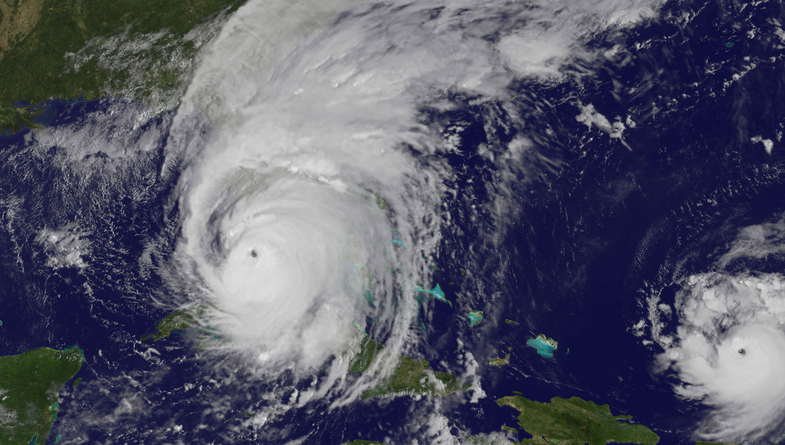Stuck in a hurricane? Don’t forget to look out for tornadoes.
A serious hidden hazard.

Hurricanes are an amalgam of the worst weather nature can produce. Not only can a landfalling storm plague entire states with intense winds, pounding rains, surges of seawater capable of flooding entire cities, but they can also spawn tornadoes. Tornadoes during a tropical storm or hurricane can be something of a hidden hazard, as they aren’t as well-advertised as a storm’s other dangers. But tropical cyclone-spawned tornadoes are no less dangerous and—even worse, they can happen with little or no warning.
It doesn’t always take a photogenic supercell on the Plains to produce a tornado. The outer bands of a tropical cyclone are ripe for thunderstorms to start rotating and quickly spawn small—but dangerous—tornadoes. There’s plenty of lift, instability, wind shear, and moisture to feed robust thunderstorms in the outer bands and allow them to rotate. Tornadoes are most common in the right-front quadrant of a tropical cyclone—that is, the area in front of and to the right of the eye’s forward motion—as that’s where wind shear is most favorable for thunderstorms to begin rotating.
Just like you would see during a more traditional tornado outbreak in the spring, tornadoes are more common in thunderstorms that are out on their own, so to speak, rather than bunched up in a squall line. Individual thunderstorms have more instability to scarf up for themselves, sometimes morphing into miniature supercells that even feature the hook echo that’s so common to see in this type of thunderstorm before a tornado.

Hurricane Harvey and its remnants spawned more than three dozen confirmed tornadoes across several states as the storm unleashed historic flooding across Texas and Louisiana. Many of the thunderstorms in Hurricane Irma’s bands spun like tops when they crashed ashore on the Florida peninsula. National Weather Service meteorologists who surveyed the damage in Florida have confirmed nine tornadoes as of September 14—eight in central Florida and one in the southern part of the state.
All of the tornadoes that occurred during Harvey and Irma were on the weaker side, but “weak” is a relative term. Even a bottom-of-the-scale EF-0 has winds strong enough to lift debris through the air, shatter windows, and knock down trees and power lines. And some of the tornadoes in a tropical cyclone can be quite strong. Hurricane Ivan’s remnants produced an unusually intense tornado outbreak as it moved inland in September 2004. The storm produced more than 100 tornadoes through the southeast and Mid-Atlantic, and more than a dozen of them caused damage significant enough that they were rated an F2 or F3 on the old Fujita Scale.
Compounding the danger posed by this type of tornado is the fact that you don’t have much time to react when a warning is issued. The typical lead time for a tornado warning—that is, the amount of time between the moment a warning is issued and the moment a tornado hits—is between 10 and 15 minutes. Sometimes the lead time is as high as half an hour, but sometimes there’s no warning at all. The thunderstorms in a tropical cyclone’s outer band are often speeding along at more than 60 MPH. That’s much faster than the speed of a normal thunderstorm, and this brisk forward motion reduces the amount of time you have to react if a tornado touches down.
The rules of survival during a tornado are the same no matter where the funnel sprouted from—get as low as possible, and put as many walls between you and the outdoors as possible. Unfortunately, not everyone in the path of a storm can heed that advice. The combination of hazards during a tropical storm or hurricane presents a unique threat to the safety of those in harm’s way. The mantra of hurricane safety is that you should hide from the wind and run from the water, and that often means getting to higher ground. But what happens when you have to worry about flooding and tornadoes at the same time?
Well, there aren’t many good options. The threat for tornadoes is among the many good reasons why people in flood zones—areas at risk of both storm surge or freshwater flooding—should evacuate ahead of time if at all possible. There were multiple instances of tornado warnings during Hurricane Harvey for neighborhoods where the water was so deep that residents were trapped in their attics and on the roof. You don’t really have anything to do in that sort of a situation, other than to hope for a swift rescue—or that the tornado misses your home. But if you’re truly trapped, your best bet is to get as low as possible without getting into the water. Once the threat passes, retreat immediately back to higher ground.